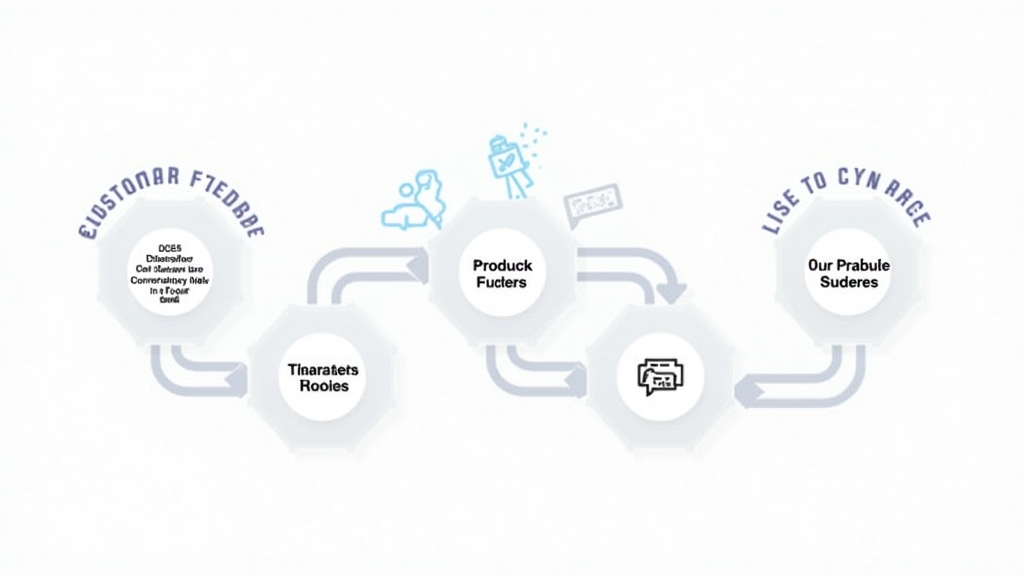Understanding Marketing Through Customer Feedback Loops
Introduction to Customer Feedback Loops
Customer feedback loops are essential for any business looking to improve its marketing strategies. These loops involve collecting, analyzing, and acting on customer opinions and experiences. By listening to your customers, you can tailor your products or services to meet their needs better. This not only enhances customer satisfaction but also drives loyalty and sales. In this article, we will explore how effective feedback loops can transform your marketing efforts, making them more responsive and targeted.
The Components of Effective Customer Feedback Loops
Collecting Customer Feedback
The first step in creating a successful feedback loop is gathering insights from your customers. You can collect feedback through various methods like surveys, social media interactions, or direct interviews. Make sure the process is easy for customers so they feel encouraged to share their thoughts. The more feedback you gather, the better understanding you’ll have of what your customers truly want.
Analyzing and Interpreting Data
Once you’ve collected the data, it’s time to analyze it carefully. Look for patterns or trends that indicate what customers like or dislike about your products or services. Use tools like spreadsheets or specialized software to help organize this information effectively. Understanding these insights allows you to make informed decisions that align with customer preferences.
Implementing Changes Based on Insights
After interpreting the data, it’s crucial to act on it. Implement changes based on what you’ve learned from customer feedback. Whether it’s adjusting a product feature or enhancing customer service practices, showing that you value their input builds trust and loyalty among your audience.
Types of Customer Feedback Methods
Surveys and Questionnaires
Surveys are one of the most common ways businesses collect feedback from customers. They can be distributed via email or embedded on websites after a purchase. Keep questions clear and concise while ensuring they cover key areas of interest related to customer experience.
Social Media Listening
Social media platforms provide a wealth of information about how customers perceive your brand. Monitoring comments and messages allows you to gauge public sentiment in real-time. Engaging with users who mention your brand helps create an open dialogue where they feel heard.
Direct Customer Interviews
Conducting direct interviews with select customers offers deep insights into their experiences with your brand. These conversations allow for follow-up questions that surveys might miss, providing richer qualitative data that can inform future marketing strategies.
Best Practices for Creating a Feedback Loop
Establishing Clear Objectives
Before starting any feedback initiative, set clear goals about what you want to achieve through customer input. Whether you’re aiming for improved product features or enhanced service quality, having specific objectives guides the entire process.
Encouraging Open Communication
Create an environment where customers feel comfortable sharing their thoughts without fear of judgment. Encourage honesty by assuring them that all feedback is valuable—positive or negative—and will be used constructively.
Regularly Updating Customers on Changes
Once you’ve made changes based on feedback received, let your customers know! Share updates through newsletters or social media posts explaining how their input influenced improvements in products or services.
Measuring the Impact of Customer Feedback Loops on Marketing
Key Performance Indicators (KPIs) to Track
To understand how effective your feedback loop is working within marketing strategies, track relevant KPIs such as customer satisfaction scores (CSAT), Net Promoter Score (NPS), and retention rates over time.
Case Studies: Successful Implementation in Businesses
Many companies have successfully integrated customer feedback into their marketing strategies leading to increased sales and improved relationships with clients. For example, a popular coffee chain revamped its menu based on survey results indicating preferences for healthier options—this led not only to higher sales but also greater customer loyalty!
Challenges in Maintaining Effective Customer Feedback Loops
Common Obstacles in Gathering Feedback
One challenge businesses face is getting enough responses from customers who may not have time or motivation to participate in surveys or provide reviews regularly.
Addressing Negative Responses Constructively
Negative feedback can be difficult but addressing it constructively is vital for growth! Instead of ignoring complaints, use them as opportunities for improvement by acknowledging issues publicly when appropriate and outlining steps taken towards resolution.
Future Trends in Customer Feedback and Marketing Integration
The Role of Technology in Enhancing Feedback Mechanisms
Emerging technologies such as chatbots are revolutionizing how businesses gather real-time insights from consumers while improving response times significantly compared traditional methods!
Predictive Analytics and Its Impact on Marketing Strategies
Predictive analytics uses historical data combined with machine learning algorithms allowing marketers anticipate future consumer behavior trends accurately—enabling tailored campaigns before needs arise!
Conclusion: The Importance of Continuous Improvement Through Customer Feedback
In conclusion, embracing continuous improvement through effective customer feedback loops plays an integral role within modern marketing strategies today! By actively engaging with clients’ voices throughout every stage—from collection analysis implementation—you create lasting relationships built upon trust while driving overall success forward!
📢 Explore More: Continue Your Journey!
If this article helped you understand the importance of customer feedback loops better, check out How To Create Engaging Surveys That Get Results! It covers powerful techniques helping you design surveys that yield valuable insights effectively.














![NEEWER 55W 18"/45cm Ring Light Kit [New Version], 5600K Dimmable ...](https://m.media-amazon.com/images/I/414QLqvZWLL._AC_.jpg)








